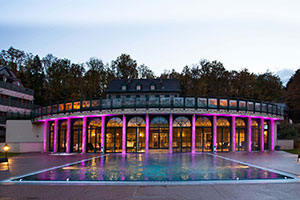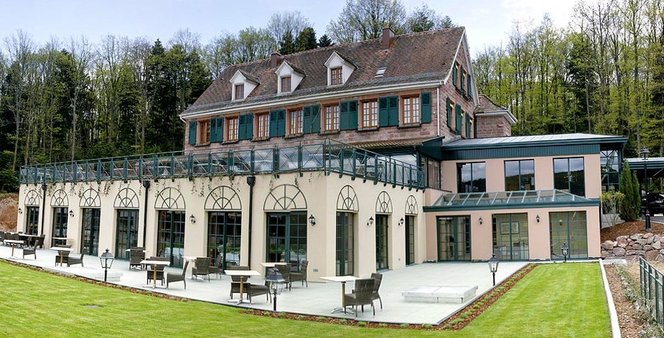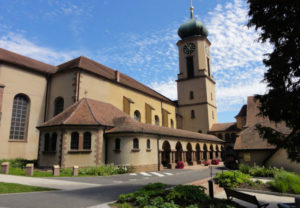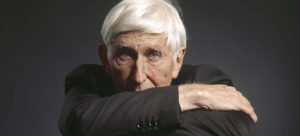
Discover all the “Friends of the Violets” evenings of 2025!
The Hotel and Spa Les Violettes**** invites you to its theme nights every first Thursday of the month! Discover without further delay our program for
Gastronomic establishment, gastronomic menu, gastronomic lounge, gastronomic recipe, new gastronomy… Gastronomy is put to all sauces. But what is gastronomy really, how can we define it?
According to the dictionary, the term gastronomy comes from the Greek gastronomia which means the law, the rule of the stomach. This word was then forgotten for a few hundred years until Joseph de Berchoux revived it in a poem entitled “The gastronome or the man of the fields at the table” published in 1799.
Basically, we can say that gastronomy is the art of cooking, of accommodating dishes.

https://en.wikipedia.org/wiki/Jean_Anthelme_Brillat-SavarinIn 1826, Brillat-Savarin, a lawyer by profession, published his book on gastronomy “Physiologie du Goût”. In the midst of verbiage and banalities, one can discover a few good words, Brillat-Savarin attempted a definition of gastronomy: “Gastronomy is the reasoned knowledge of everything that has to do with man, as long as he eats . Its purpose is to ensure the preservation of men by means of the best possible food. »
His project: to make this idyllic place a dream destination! At the same time, Philippe Bosc bought the “Les Iris” hotel located next to the Thierenbach basilica from the Vonesch family. The infrastructure was completely transformed by the buyer who gave it its name in 2003: La ferme des moines. The restaurant is decorated taking into account the history of the Marian site and the monastic spirit dating back to 1135. A seminar and banquet center with a total capacity of 400 seats is also being created. This makes it a unique site in Alsace, endowed in addition with an exceptional cachet and proven originality.

After numerous transformations, the “Les Violettes” hostelry opened its doors in 2003. In a wonderfully restored setting, there reigns a warm, cozy and authentically Alsatian atmosphere. The decoration is made up of sacred pieces, paintings by masters, various objects from popular arts and traditions as well as antique furniture dating from the 17th century. Statues from the 13th century adorn the reception, in particular that of the Virgin and Child of Strasbourg and then another of Saint-Benoît.
Let’s not be afraid to affirm it: gastronomy has participated in the evolution of humanity! Indeed, it allowed him to maintain good health and at the same time to evolve. Human beings need food to live, so they will use all the means at their disposal to obtain it.
For this, he will create breeding and culture, and in the process the tools that go with it. Much later, men will invent the trade and distribution of this food. They will import and export new products from all over the world which will become indispensable.
Then, the man had the idea of inventing the kitchen: recipes, utensils to make them, a culinary art and a job: that of cook. From this culinary art will be born the arts of the table: cutlery, plates, glasses, dishes, tables, tablecloths and napkins.
For more prestigious meals, he will imagine the art of serving at the table, of presenting the dishes, of serving the wine, of cutting the meat. These “dirty jobs” were accomplished by pages and servants who would later become waiters, sommeliers and butlers.
To eat and drink away from home, taverns, cabarets, cafes, restaurants, bistros, brasseries, etc. will be created.

All civilizations have gathered around banquets and feasts. Banquets have always had a social and political role.
We distinguish ourselves from others by our way of eating, by our manners, by our menus. There is the civilization of bread and that of rice, that of wine and that of beer, cooking with butter versus cooking with oil, meat and vegetarian dishes. Each country, each region, each city has developed a culinary art in relation to its agricultural production.
What a godsend when sugar appeared! How many desserts were created then! And the spices that made the wealth of merchants and the pleasure of palates. The cooks have written their recipes. Cookbooks, first for the use of professionals, have become more and more popular.

Gastronomy is constantly evolving throughout history, this transformation is not limited only to dishes and recipes but also to table manners. These are the gestures of the cook, the service staff, the dishes and the wine and those of the guests. The gastronomic meal has never stopped evolving. This evolution is linked to the creation of new techniques and new utensils, the discovery of new foods, but nevertheless retains the know-how and traditions of a culinary and social culture.
Indeed, nothing as long as the meal is a gesture of sociability. For this reason, in the 18th century, the art of conversation counted as much as the culinary art for the success of a meal. And the French service where all the dishes were served at the same time was seen as the ultimate in the art of living.
Gastronomy embodies the know-how of cooks in their art of transforming products and ingredients into dishes that honor the senses and provide pleasure. It is also the know-how of a sommelier who knows how to pair wines with food. It is also the art of setting the table and presenting the dishes, always following the trends of art and design.

The Hotel and Spa Les Violettes**** invites you to its theme nights every first Thursday of the month! Discover without further delay our program for

Spa Weekend Alsace : Hotel & Spa Les Violettes Spend a dream weekend in a hotel and spa housed in an exceptional setting in Alsace.

The history of the spa through the ages Humans all over the world have always known how to use the therapeutic virtues of hot water.

The Basilica of Our Lady of Thierenbach At 355 m altitude, two steps from the hotel “les violettes” and the farm of the monks, stands

Tomi ungerer, godfather of violets Renowned as one of the most talented designers of his generation, since 1957 he has had an international career in

Que faire aux alentours de l’hôtel les violettes ? De nombreux lieux culturels, historiques et de loisirs se situent à proximité de l’hôtel “Les Violettes”